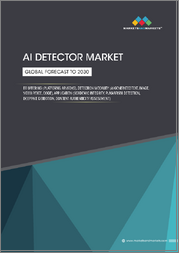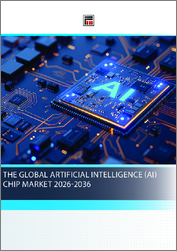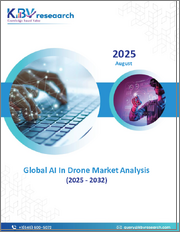
|
시장보고서
상품코드
1776771
리걸테크용 AI 시장 예측(-2032년) : 컴포넌트별, 배포 모델별, 기술별, 용도별, 최종사용자별, 지역별 세계 분석AI in LegalTech Market Forecasts to 2032 - Global Analysis By Component (Component, Services and Other Components), Deployment Model (Cloud-based, On-premises and Hybrid), Technology, Application, End User and By Geography |
||||||
Stratistics MRC에 따르면 세계의 리걸테크용 AI 시장은 2025년에 68억 2,000만 달러를 차지하며 예측 기간 중 CAGR은 26.2%로 성장하며, 2032년에는 347억 7,000만 달러에 달할 전망입니다.
리걸테크의 AI는 머신러닝, 자연 언어 처리, 고급 분석 등 인공지능 기술을 적용하여 법률 프로세스를 최적화합니다. 이 툴은 계약 검토, 법률 조사, 문서 관리 등의 활동을 간소화하여 법률 전문가가 전략적 업무에 집중할 수 있도록 도와줍니다. 대량의 법률 데이터를 처리함으로써 AI는 패턴을 식별하고 의사결정을 빠르게 내릴 수 있습니다. 리걸텍의 솔루션은 로펌과 사내 법무팀 전체의 정확성, 효율성, 컴플라이언스를 향상시키는 자동화된 데이터베이스 시스템을 통해 전통적인 법무 업무를 혁신하고 있습니다.
flowGenius에 따르면 한 부티크 로펌은 계약서 검토 시간을 60% 단축하여 변호사 1인당월20시간 이상의 청구 가능 시간을 절약하고, 오류율을 낮추며, 고객의 납기일을 개선했다고 합니다.
보다 신속하고 편리한 서비스를 원하는 고객 수요 증가
AI가 탑재된 플랫폼을 통해 로펌은 문서 검토, 계약서 분석, 법률 조사 등 일상 업무를 자동화하고, 납기를 대폭 단축할 수 있게 되었습니다. 이러한 변화는 실시간 업데이트와 개인화된 리걸 서포트에 대한 고객의 기대치가 높아짐에 따른 것입니다. 또한 인공지능 툴이 가상 비서 및 챗봇에 통합되어 접근성이 향상되어 고객은 기존 업무 시간 외에도 리걸서비스와 소통할 수 있게 되었습니다. 법무 부서가 업무 효율성을 개선하기 위해 노력하는 가운데, AI 기반 솔루션에 대한 수요는 계속 가속화되고 있습니다.
변화에 대한 저항과 디지털 리터러시 부재
전통적인 로펌은 혁신에 저항하는 경직된 구조 속에서 운영되는 경우가 많아 디지털 혁신의 속도를 늦추고 있습니다. 또한 법률 실무자의 기술 교육 부족은 효과적인 AI 도입의 장벽으로 작용하고 있습니다. 데이터 프라이버시, 알고리즘 편향성, 윤리 준수에 대한 우려로 인해 저항이 더욱 거세지고 있습니다. 이러한 문제들은 디지털 인프라에 대한 접근이 제한적인 소규모 사무실이나 지역에서 특히 두드러지게 나타나며, 보급에 걸림돌이 되고 있습니다.
예측 분석과 전략적 의사결정을 위한 AI의 활용
AI는 소송 결과, 판사의 행동, 소송 리스크를 평가할 수 있는 예측 분석을 가능하게 함으로써 법률 전략의 새로운 가능성을 이끌어내고 있습니다. AI 툴은 과거 사례 데이터와 판례를 분석함으로써 변호사가 보다 정보에 입각한 주장을 만들고, 상대 변호사의 전술을 예측할 수 있도록 돕습니다. 이 기능을 통해 법률 조사는 사후 대응형에서 사전 대응형으로 변화하고, 기업은 리걸텍을 공동 거버넌스 및 리스크 감소의 전략적 자산으로 인식하여 리걸텍의 자원 배분을 최적화하고, 고객에 대한 자문 서비스를 향상시킬 수 있습니다.
법률 전문가에 대한 지나친 의존과 책상 위의 공론
자동화된 툴에 대한 과도한 의존은 비판적 사고력 저하, 법적 추론력 저하, 복잡한 사건에 대한 맥락적 판단력 부족으로 이어질 수 있습니다. 또한 일부 AI 알고리즘의 블랙박스적 특성은 특히 인간의 감독 없이 의사결정이 이루어질 경우 책임 문제를 야기합니다. 이러한 추세는 기술에 정통한 로펌과 첨단 리걸테크에 투자할 수 없는 로펌 간의 격차를 확대하고, 전문적 상황을 혼란스럽게 만들며, AI가 생성하는 법률 자문에 윤리적 딜레마를 야기할 수 있습니다.
COVID-19의 영향:
COVID-19 팬데믹으로 인해 원격 화상 및 화상 재판이 보편화되면서 LegalTech 도입의 계기가 되었습니다. 로펌과 법무 부서는 업무의 연속성을 유지하기 위해 AI 기반 툴에 주목하여 e디스커버리, 계약서 검토, 컴플라이언스 추적 등의 업무를 자동화하고 있습니다. 이 위기는 분산된 팀 간의 협업을 지원하면서 기밀성이 높은 법률 데이터를 처리할 수 있는 안전한 클라우드 기반 플랫폼의 필요성을 부각시켰습니다.
예측 기간 중 소프트웨어 부문이 가장 클 것으로 예측됩니다.
소프트웨어 부문은 법률 기능 전반에 걸쳐 광범위하게 적용되므로 예측 기간 중 가장 큰 시장 점유율을 차지할 것으로 예측됩니다. AI 지원 소프트웨어 솔루션은 법률 조사, 계약서 분석, 문서 자동화, 사건 예측 등의 업무에 폭넓게 활용되고 있습니다. 이러한 플랫폼은 확장성, 기존 시스템과의 통합, 사용자 친화적인 인터페이스를 제공하므로 로펌과 기업 법무부서 모두에게 필수적인 플랫폼이 되고 있습니다.
예측 기간 중 CAGR은 프로젝트 예측-분석 분야가 가장 높을 것으로 예측됩니다.
예측 기간 중 소송 예측 및 분석 분야가 가장 높은 성장률을 보일 것으로 예측됩니다. 이는 법률 전문가들이 소송 결과 예측, 리스크 익스포저 평가, 소송 전략의 정교화를 위해 AI를 활용하려는 경향이 강해지고 있기 때문입니다. 이 툴은 법원 판결, 판사 프로파일, 판례 등 방대한 데이터를 분석하여 실용적인 인사이트를 제공합니다. 소송 사안의 복잡성과 데이터베이스 의사결정의 필요성이 도입에 박차를 가하고 있습니다.
가장 큰 점유율을 차지하는 지역:
예측 기간 중 북미는 성숙한 법적 인프라와 높은 기술 보급률로 인해 가장 큰 시장 점유율을 차지할 것으로 예측됩니다. 이 지역에는 여러 리걸테크 혁신가 및 AI 어댑터가 존재하며, 로펌들이 업무에 AI를 적극적으로 도입하고 있습니다. 규제 지원, 강력한 데이터 보호 프레임워크, 디지털 리걸 서비스에 대한 고객 수요가 성장을 더욱 촉진하고 있습니다. Thomson Reuters, LexisNexis, IBM과 같은 대기업의 존재가 혁신과 경쟁 차별화를 촉진하고 있습니다.
CAGR이 가장 높은 지역:
예측 기간 중 아시아태평양은 급속한 디지털화와 리갈 서비스 수요 증가에 힘입어 가장 높은 CAGR을 나타낼 것으로 예측됩니다. 인도, 중국, 일본 등의 국가에서는 리걸테크 스타트업에 대한 투자가 증가하고 있으며, 사법제도 현대화를 위한 정부 주도의 구상이 진행되고 있습니다. 이 지역의 중산층과 비즈니스 생태계의 성장은 AI를 활용한 리걸 솔루션의 새로운 기회를 창출하고 있습니다. 또한 클라우드 기반 플랫폼과 모바일 법률 앱의 채택으로 인해 서비스가 충분히 제공되지 않는 시장에서의 접근성이 향상되고 있습니다.
무료 커스터마이징 제공:
이 보고서를 구독하는 고객은 다음과 같은 무료 맞춤화 옵션 중 하나를 사용할 수 있습니다.
- 기업소개
- 추가 시장 기업의 종합적인 프로파일링(최대 3사)
- 주요 기업의 SWOT 분석(최대 3사)
- 지역 세분화
- 고객의 관심에 따른 주요 국가별 시장 추산·예측·CAGR(주: 타당성 검토에 따라 다름)
- 경쟁사 벤치마킹
- 제품 포트폴리오, 지역적 입지, 전략적 제휴에 기반한 주요 기업 벤치마킹
목차
제1장 개요
제2장 서문
- 개요
- 이해관계자
- 조사 범위
- 조사 방법
- 데이터 마이닝
- 데이터 분석
- 데이터 검증
- 조사 어프로치
- 조사 자료
- 1차 조사 자료
- 2차 조사 정보원
- 전제조건
제3장 시장 동향 분석
- 촉진요인
- 억제요인
- 기회
- 위협
- 기술 분석
- 용도 분석
- 최종사용자 분석
- 신흥 시장
- COVID-19의 영향
제4장 Porter's Five Forces 분석
- 공급 기업의 교섭력
- 바이어의 교섭력
- 대체품의 위협
- 신규 진출업체의 위협
- 경쟁 기업 간 경쟁 관계
제5장 세계의 리걸테크용 AI 시장 : 컴포넌트별
- 소프트웨어
- 법무 조사·분석 소프트웨어
- 계약 분석 및 관리 소프트웨어
- 전자 정보개시 플랫폼
- 문서 자동화 툴
- IP 관리 소프트웨어
- 서비스
- 컨설팅 서비스
- 실장 및 통합 서비스
- 커스텀 개발 서비스
- 기타 컴포넌트
제6장 세계의 리걸테크용 AI 시장 : 배포 모델별
- 클라우드 기반
- 온프레미스
- 하이브리드
제7장 세계의 리걸테크용 AI 시장 : 기술별
- 자연언어처리(NLP)
- 기계학습(ML)
- 딥러닝
- 컴퓨터 비전
- 기타 기술
제8장 세계의 리걸테크용 AI 시장 : 용도별
- 계약 분석과 리뷰
- 전자 증거 개시
- 법률 조사
- 컴플라이언스와 리스크 관리
- 증례 예측과 분석
- 문서 자동화
- 청구와 시간 추적
- 기타 용도
제9장 세계의 리걸테크용 AI 시장 : 최종사용자별
- 법률 사무소
- 기업 법무 부문
- 정부기관 및 공공 부문
- 법과 대학원과 학술기관
- 기타 최종사용자
제10장 세계의 리걸테크용 AI 시장 : 지역별
- 북미
- 미국
- 캐나다
- 멕시코
- 유럽
- 독일
- 영국
- 이탈리아
- 프랑스
- 스페인
- 기타 유럽
- 아시아태평양
- 일본
- 중국
- 인도
- 호주
- 뉴질랜드
- 한국
- 기타 아시아태평양
- 남미
- 아르헨티나
- 브라질
- 칠레
- 기타 남미
- 중동 및 아프리카
- 사우디아라비아
- 아랍에미리트
- 카타르
- 남아프리카공화국
- 기타 중동 및 아프리카
제11장 주요 발전
- 계약, 파트너십, 협업, 조인트 벤처
- 인수와 합병
- 신제품 발매
- 사업 확대
- 기타 주요 전략
제12장 기업 프로파일링
- AI Lawyer
- Briefpoint
- Case Status
- Casetext
- ClearLaw
- elint AI
- Ironclad
- LawToolBox
- Legalyze.ai
- LexisNexis
- Luminance
- MikeLegal
- mLeAP
- MyCase
- Provakil
- Robin AI
- ROSS Intelligence
- Smith.ai
According to Stratistics MRC, the Global AI in LegalTech Market is accounted for $6.82 billion in 2025 and is expected to reach $34.77 billion by 2032 growing at a CAGR of 26.2% during the forecast period. AI in LegalTech involves applying artificial intelligence technologies like machine learning, natural language processing, and advanced analytics to optimize legal processes. These tools streamline activities such as reviewing contracts, conducting legal research, and managing documentation, allowing legal professionals to concentrate on strategic tasks. By processing large volumes of legal data, AI helps identify patterns and accelerate decision-making. LegalTech solutions are transforming conventional legal operations through automated, data-driven systems that enhance accuracy, efficiency, and compliance across law firms and in-house legal teams.
According to flowGenius, a boutique law firm cut contract review time by 60%, saving over 20 billable hours per attorney per month while reducing error rates and improving client turnaround.
Market Dynamics:
Driver:
Growing client demand for faster and more accessible services
AI-powered platforms are enabling law firms to automate routine tasks such as document review, contract analysis, and legal research, significantly reducing turnaround times. This shift is driven by rising client expectations for real-time updates and personalized legal support. Moreover, the integration of AI tools into virtual legal assistants and chatbots is enhancing accessibility, allowing clients to interact with legal services outside traditional office hours. As legal departments strive to improve operational efficiency, the demand for AI-driven solutions continues to accelerate.
Restraint:
Resistance to change and lack of digital literacy
Traditional law firms often operate within rigid structures that resist innovation, slowing the pace of digital transformation. Additionally, the lack of technical training among legal practitioners poses a barrier to effective AI implementation. Concerns around data privacy, algorithmic bias, and ethical compliance further compound resistance. These challenges are particularly pronounced in smaller firms and regions with limited access to digital infrastructure, hindering widespread adoption.
Opportunity:
Leveraging AI for predictive analytics and strategic decision-making
AI is unlocking new possibilities in legal strategy by enabling predictive analytics that assess case outcomes, judge behavior, and litigation risks. By analyzing historical case data and legal precedents, AI tools help lawyers craft more informed arguments and anticipate opposing counsel tactics. This capability is transforming legal research from a reactive to a proactive function, allowing firms to optimize resource allocation and improve client advisory services positioning LegalTech as a strategic asset in corporate governance and risk mitigation.
Threat:
Over-reliance and deskilling of legal professionals
Over-dependence on automated tools may lead to reduced critical thinking, diminished legal reasoning, and a lack of contextual judgment in complex cases. Additionally, the black-box nature of some AI algorithms raises accountability issues, especially when decisions are made without human oversight. This trend could also widen the gap between tech-savvy firms and those unable to invest in advanced LegalTech, potentially disrupting the professional landscape and creating ethical dilemmas around AI-generated legal advice.
Covid-19 Impact:
The COVID-19 pandemic served as a catalyst for LegalTech adoption, as remote work and virtual court proceedings became the norm. Law firms and legal departments turned to AI-powered tools to maintain continuity in operations, automating tasks such as e-discovery, contract review, and compliance tracking. The crisis highlighted the need for secure, cloud-based platforms capable of handling sensitive legal data while supporting collaboration across distributed teams.
The software segment is expected to be the largest during the forecast period
The software segment is expected to account for the largest market share during the forecast period due to its extensive application across legal functions. AI-enabled software solutions are being widely adopted for tasks such as legal research, contract analysis, document automation, and case prediction. These platforms offer scalability, integration with existing systems, and user-friendly interfaces, making them indispensable for both law firms and corporate legal departments.
The case prediction & analytics segment is expected to have the highest CAGR during the forecast period
Over the forecast period, the case prediction & analytics segment is predicted to witness the highest growth rate as legal professionals are increasingly leveraging AI to forecast litigation outcomes, assess risk exposure, and refine case strategies. These tools analyze vast datasets, including court rulings, judge profiles, and legal precedents, to generate actionable insights. The rising complexity of legal cases and the need for data-driven decision-making are fueling adoption.
Region with largest share:
During the forecast period, the North America region is expected to hold the largest market share attributed to a mature legal infrastructure and high technology penetration. The region is home to several LegalTech innovators and early adopters, with law firms actively integrating AI into their workflows. Regulatory support, robust data protection frameworks, and client demand for digital legal services are further propelling growth. The presence of major players such as Thomson Reuters, LexisNexis, and IBM is fostering innovation and competitive differentiation.
Region with highest CAGR:
Over the forecast period, the Asia Pacific region is anticipated to exhibit the highest CAGR driven by rapid digitalization and expanding legal service demand. Countries like India, China, and Japan are witnessing increased investment in LegalTech startups and government-led initiatives to modernize judicial systems. The region's growing middle class and business ecosystem are creating new opportunities for AI-powered legal solutions. Moreover, the adoption of cloud-based platforms and mobile legal apps is enhancing accessibility in underserved markets.
Key players in the market
Some of the key players in AI in LegalTech Market include AI Lawyer, Briefpoint, Case Status, Casetext, ClearLaw, elint AI, Ironclad, LawToolBox, Legalyze.ai, LexisNexis, Luminance, MikeLegal, mLeAP, MyCase, Provakil, Robin AI, ROSS Intelligence and Smith.ai.
Key Developments:
In June 2025, LexisNexis Legal & Professional partnered with generative AI startup Harvey to integrate trusted legal content (U.S. case law, statutes, Shepard's citations) into Harvey's platform and jointly build advanced workflows like drafting Motions to Dismiss and Summary Judgment.
In April 2025, Ironclad launched Obligation & Entity Management, a unified dashboard, and custom AI data extraction to help procurement and legal teams recover up to 8.6% of lost contract value by ensuring supplier obligations are fulfilled.
Components Covered:
- Software
- Services
- Other Components
Deployment Models Covered:
- Cloud-based
- On-premises
- Hybrid
Technologies Covered:
- Natural language processing (NLP)
- Machine learning (ML)
- Deep Learning
- Computer Vision
- Other Technologies
Applications Covered:
- Contract Analytics & Review
- E-discovery
- Legal Research
- Compliance & Risk Management
- Case Prediction & Analytics
- Document Automation
- Billing & Time Tracking
- Other Applications
End Users Covered:
- Law Firms
- Corporate Legal Departments
- Government Agencies & Public Sector
- Law Schools & Academia
- Other End Users
Regions Covered:
- North America
- US
- Canada
- Mexico
- Europe
- Germany
- UK
- Italy
- France
- Spain
- Rest of Europe
- Asia Pacific
- Japan
- China
- India
- Australia
- New Zealand
- South Korea
- Rest of Asia Pacific
- South America
- Argentina
- Brazil
- Chile
- Rest of South America
- Middle East & Africa
- Saudi Arabia
- UAE
- Qatar
- South Africa
- Rest of Middle East & Africa
What our report offers:
- Market share assessments for the regional and country-level segments
- Strategic recommendations for the new entrants
- Covers Market data for the years 2024, 2025, 2026, 2028, and 2032
- Market Trends (Drivers, Constraints, Opportunities, Threats, Challenges, Investment Opportunities, and recommendations)
- Strategic recommendations in key business segments based on the market estimations
- Competitive landscaping mapping the key common trends
- Company profiling with detailed strategies, financials, and recent developments
- Supply chain trends mapping the latest technological advancements
Free Customization Offerings:
All the customers of this report will be entitled to receive one of the following free customization options:
- Company Profiling
- Comprehensive profiling of additional market players (up to 3)
- SWOT Analysis of key players (up to 3)
- Regional Segmentation
- Market estimations, Forecasts and CAGR of any prominent country as per the client's interest (Note: Depends on feasibility check)
- Competitive Benchmarking
- Benchmarking of key players based on product portfolio, geographical presence, and strategic alliance
Table of Contents
1 Executive Summary
2 Preface
- 2.1 Abstract
- 2.2 Stake Holders
- 2.3 Research Scope
- 2.4 Research Methodology
- 2.4.1 Data Mining
- 2.4.2 Data Analysis
- 2.4.3 Data Validation
- 2.4.4 Research Approach
- 2.5 Research Sources
- 2.5.1 Primary Research Sources
- 2.5.2 Secondary Research Sources
- 2.5.3 Assumptions
3 Market Trend Analysis
- 3.1 Introduction
- 3.2 Drivers
- 3.3 Restraints
- 3.4 Opportunities
- 3.5 Threats
- 3.6 Technology Analysis
- 3.7 Application Analysis
- 3.8 End User Analysis
- 3.9 Emerging Markets
- 3.10 Impact of Covid-19
4 Porters Five Force Analysis
- 4.1 Bargaining power of suppliers
- 4.2 Bargaining power of buyers
- 4.3 Threat of substitutes
- 4.4 Threat of new entrants
- 4.5 Competitive rivalry
5 Global AI in LegalTech Market, By Component
- 5.1 Introduction
- 5.2 Software
- 5.2.1 Legal Research & Analytics Software
- 5.2.2 Contract Analysis & Management Software
- 5.2.3 E-discovery Platforms
- 5.2.4 Document Automation Tools
- 5.2.5 IP Management Software
- 5.3 Services
- 5.3.1 Consulting Services
- 5.3.2 Implementation & Integration Services
- 5.3.3 Custom Development Services
- 5.4 Other Components
6 Global AI in LegalTech Market, By Deployment Model
- 6.1 Introduction
- 6.2 Cloud-based
- 6.3 On-premises
- 6.4 Hybrid
7 Global AI in LegalTech Market, By Technology
- 7.1 Introduction
- 7.2 Natural language processing (NLP)
- 7.3 Machine learning (ML)
- 7.4 Deep Learning
- 7.5 Computer Vision
- 7.6 Other Technologies
8 Global AI in LegalTech Market, By Application
- 8.1 Introduction
- 8.2 Contract Analytics & Review
- 8.3 E-discovery
- 8.4 Legal Research
- 8.5 Compliance & Risk Management
- 8.6 Case Prediction & Analytics
- 8.7 Document Automation
- 8.8 Billing & Time Tracking
- 8.9 Other Applications
9 Global AI in LegalTech Market, By End User
- 9.1 Introduction
- 9.2 Law Firms
- 9.3 Corporate Legal Departments
- 9.4 Government Agencies & Public Sector
- 9.5 Law Schools & Academia
- 9.6 Other End Users
10 Global AI in LegalTech Market, By Geography
- 10.1 Introduction
- 10.2 North America
- 10.2.1 US
- 10.2.2 Canada
- 10.2.3 Mexico
- 10.3 Europe
- 10.3.1 Germany
- 10.3.2 UK
- 10.3.3 Italy
- 10.3.4 France
- 10.3.5 Spain
- 10.3.6 Rest of Europe
- 10.4 Asia Pacific
- 10.4.1 Japan
- 10.4.2 China
- 10.4.3 India
- 10.4.4 Australia
- 10.4.5 New Zealand
- 10.4.6 South Korea
- 10.4.7 Rest of Asia Pacific
- 10.5 South America
- 10.5.1 Argentina
- 10.5.2 Brazil
- 10.5.3 Chile
- 10.5.4 Rest of South America
- 10.6 Middle East & Africa
- 10.6.1 Saudi Arabia
- 10.6.2 UAE
- 10.6.3 Qatar
- 10.6.4 South Africa
- 10.6.5 Rest of Middle East & Africa
11 Key Developments
- 11.1 Agreements, Partnerships, Collaborations and Joint Ventures
- 11.2 Acquisitions & Mergers
- 11.3 New Product Launch
- 11.4 Expansions
- 11.5 Other Key Strategies
12 Company Profiling
- 12.1 AI Lawyer
- 12.2 Briefpoint
- 12.3 Case Status
- 12.4 Casetext
- 12.5 ClearLaw
- 12.6 elint AI
- 12.7 Ironclad
- 12.8 LawToolBox
- 12.9 Legalyze.ai
- 12.10 LexisNexis
- 12.11 Luminance
- 12.12 MikeLegal
- 12.13 mLeAP
- 12.14 MyCase
- 12.15 Provakil
- 12.16 Robin AI
- 12.17 ROSS Intelligence
- 12.18 Smith.ai



















